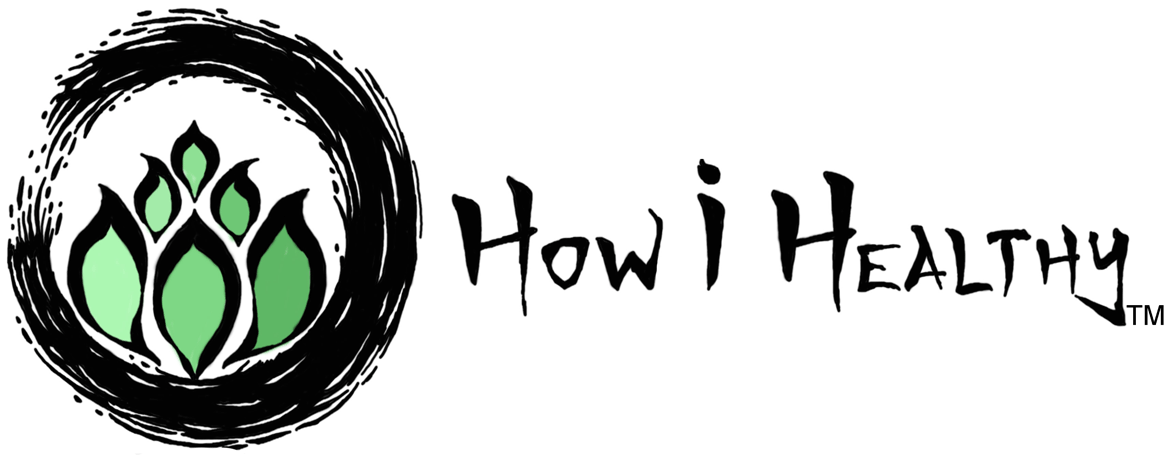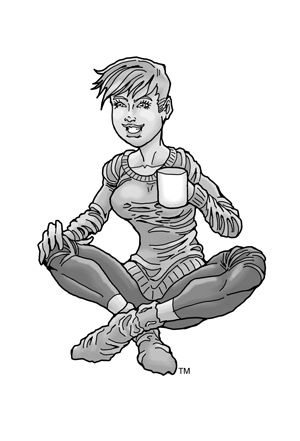In This Article, We'll Cover:
- Coffee History
- Why Coffee is Awesome
- Why Maca is Awesome
- How i Healthy’s Favorite Coffee Alternatives & Why
Taking a pause for health reasons? Trying to limit the cups you drink in a day? Maybe you’re just avoiding nighttime coffee?
Whatever the reason, if you find yourself wanting a warm coffee but can’t have it, one of these options might give you that “coffee cozy” feeling.
For the record, I haven’t stopped drinking coffee. But I wanted some alternatives to my second (of fourth…) cup. I don’t always get jittery, but when I do, I regret it.
I offer these alternatives, but not lightly. You see, I’m a coffee lover and not just any beverage will suffice.
All About Coffee
How can we dive into coffee alternatives without giving coffee its credit?
Coffee influenced history, culture, religion, and politics for centuries.
Let’s brew a cup and chat.
A Brief History of Coffee
Etymology:
Italian caffè, from Turkish kahve, from Arabic qahwa
(59)
Legend says that Kaldi, an Ethiopian goat herder, discovered coffee beans around 850BCE. His goats became frisky after eating bright red berries from a bush. Through experimentation with these berries, coffee, or qahwa, was born. The earliest known cultivation began in Yemen. (57, 58)
From Mocha, a Yemeni port, coffee exports landed in Cairo, Syria, Aleppo, Mecca, and Istanbul by 1554. Qahwa became a feature in Sufism religious rituals and coffeehouses alike. (58)
Once introduced to the Ottoman Empire, coffee spread to Europe and beyond through several ways.
- Malta during the Great Siege of Malta 1565. Enslaved Turkish Muslims, imprisoned by the Knights of St. John, prepared coffee. This introduced coffee to Maltese high society. (60)
- The next spike in coffee popularity occurred in Vienna during the 1680’s. After defeating the Turks in the Battle of Vienna, the spoils of war included coffee. (61)
- The English and Dutch East India Trading Companies exported coffee to occupied lands across the world. (58)
- Once introduced to climates that supported cultivation, slave labor supported coffee plantation enterprises. (62)
- After the Boston Tea Party of 1773, American revolutionaries deemed tea unpatriotic. Coffee drinking became the new fashion. (62)
Coffeehouses became meeting places of artists, freethinkers, and intellectuals.
Such intellectual hubs concerned monarchs, dictators, and people of power.
“People drinking alcohol would just get drunk, sing, and be jolly. Whereas the people drinking coffee remained sober and plotted against the government." (63)
Stewart Allen, coffee expert
Legends say the American and French Revolutionaries conspired around cups of coffee. (58)
Bans on coffeehouses pop-up throughout history but all fail to stick around. King Charles II imposed such a ban, only to revoke his order 11 days later after intense backlash. (58, 63)
Coffee is more than just a beverage. It’s an experience that’s brought folks together for centuries.
That’s one reason why coffee alternatives are hard to find.
A State of Being: “Coffeed”
“Coffeed” may not be a real verb, but it feels real for me.
Being “coffeed” means feeling the balance of alertness and cozy. Starting the day yet pausing to enjoy it as well.
It means feeling that comforting mug in my hands. “Coffeed” means friends and family. It means connection to everything around me.
Coffee is not simply a beverage. It’s a feeling, a state of being.
I say this not to sound ridiculous; I just take my coffee seriously. So, when I say I’ve found two alternatives to my ritualistic brew, I want the gravity of that statement understood.
I’ve got high expectations.
A coffee alternative, for me, does not mean tea, hot lemon water, or some other sad substitute I’ve seen. I like those things too, but for me, they are not interchangeable with coffee.
I’ll drink tea when I want a tea experience.
Side note: There’s been a lot of (non-caffeinated) buzz about mushroom coffee alternatives. While these look intriguing, I’m allergic to mushrooms so that’s not an option for me, and I haven’t looked into it.
A true coffee alternative is not a pale imitation of coffee, trying to be something it’s not. Nothing tastes like coffee but coffee.
Instead, it should provide a unique coffee-like experience that doesn’t leave me… well, wanting coffee.
So, what alternatives are there?
My Favorite Coffee Alternatives
Not only does a coffee alternative need to be delicious, it needs to meet the How i Healthy Standard as closely as possible. Here’s a recap:

The How i Healthy Standard
Our favorite products/brands meet as many of these conditions as possible.
Healthy body, healthy planet, & healthy sex means:
- Align with My Best Sustainability & Ethical Tips
- As Local as Possible
- Cruelty-Free
- Doesn’t Contain these Harmful Chemicals
- Environmental and/or Socially Responsible Company
- Ethically Made: Fair Trade, Living Wages, Safe Worker Conditions
- Gender-inclusive
- No Greenwashing Scams
- Organic & Sustainably Harvested Ingredients
- Pass How i Healthy’s Counterfeit Vetting Process
- Purchased Through/From an Ethical Shop/Marketplace.
- Zero Waste / Plastic & Bioplastic-free / Home Compostable
- 1% for the Planet®, B Corporation®, Green American Business®, or similar credentials
The Maca Team®
First up we have The Morning Motivator from The Maca Team®!
Not only is this mix yummy, but it’s also packed full of nutrient dense maca!
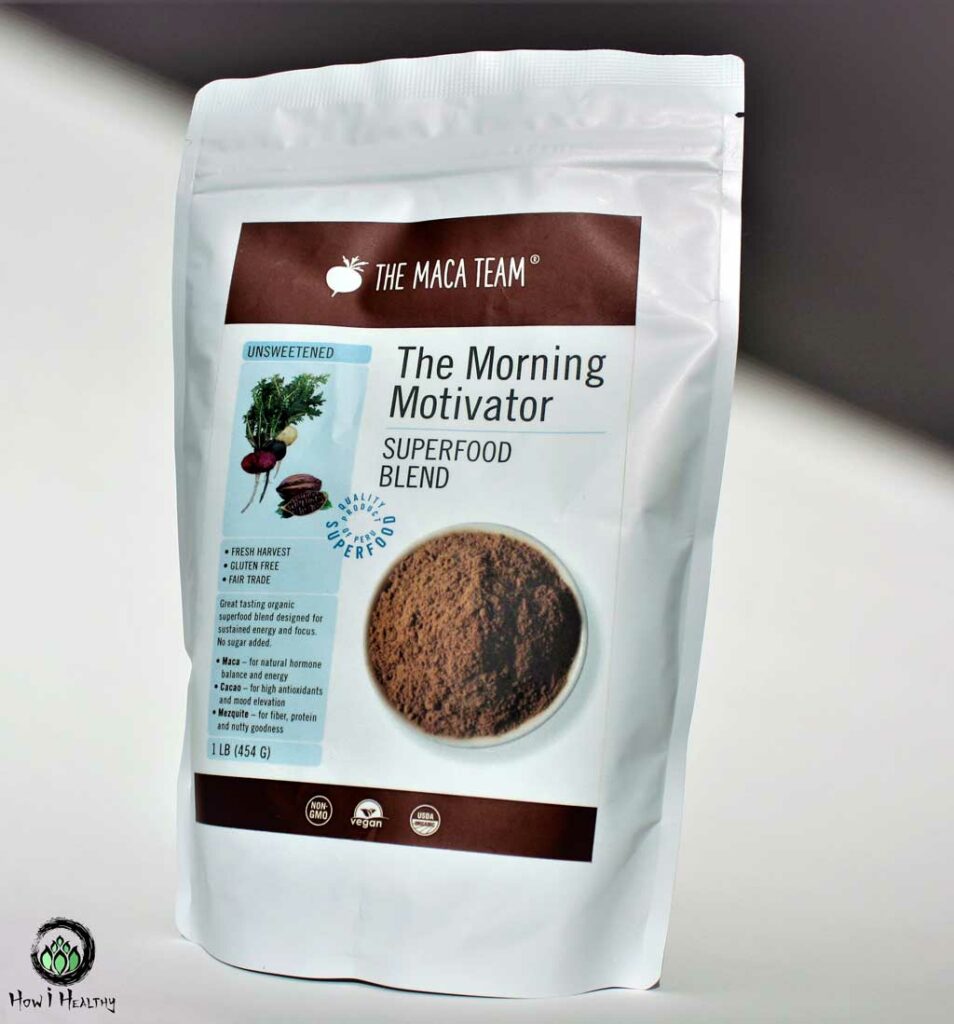
Glorious Maca!
Maca has an impressive nutrient profile containing several amino acids, iron, calcium, zinc, copper, and potassium. (3)
Maca in clinical studies has found to potentially:
- Decrease diastolic blood pressure, and blood glucose levels.
- Have antidepressant qualities.
- Improve memory, mood, and energy levels.
- Improve sperm count, motility, production, and quality.
- Reduce and prevent osteoporosis.
- Reduce chronic mountain sickness.
- Reduce some side effects of SSRI-antidepressant inhibitors.
(4, 5, 6, 7, 8, 9, 10, 11, 12, 13, 14, 15, 16, 17, 18, 19, 20, 21)
Maca: Counterfeits & Contamination
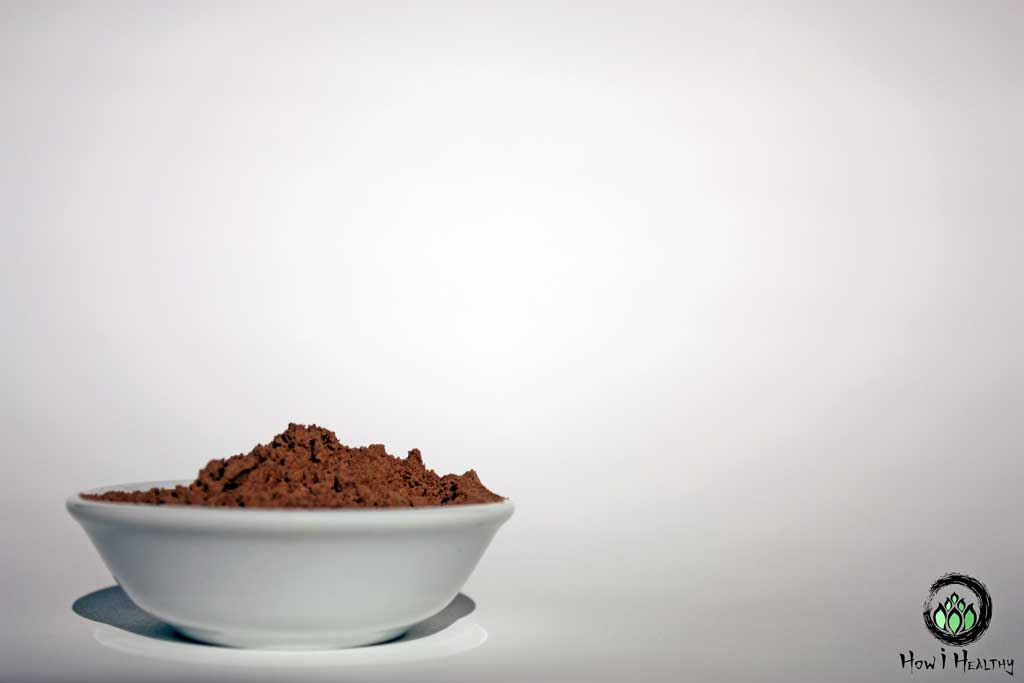
But here’s the thing, finding quality maca is not without its challenges.
With increased popularity come increased risks.
Folks can take advantage of the next health food craze by selling poor quality products or even Counterfeits. (64)
Maca is no different. Not all maca is quality maca. Or even maca at all.
Maca prefers the extreme altitude and environment of the Andes mountains of Peru (65). Such an environment is difficult to replicate elsewhere in the world.
In Peru, it is illegal to export raw unprocessed whole maca bulbs. That means you can’t order maca bulbs to plants in your garden back home. (66)
Yet, maca is sold from non-Peruvian sources.
Allegedly, “bio-pirates” came to Peru and smuggled out maca bulbs, seeds, and even soil from the Peruvian highlands, according to the Association of Exporters of Peru (ADEX). (66, 67)
The smuggled maca was then planted in Yunnan province of China. Chinese maca was born. (66)
“Today, China produces more maca than Peru”, stated Andrés Valladolid, president of the Peruvian National Commission Against Biopiracy. (66)
Biopiracy aside, Chinese “maca” has some other alarming red flags.
1/5 of Chinese soil is “contaminated” with pollutants like cadmium, nickel, and arsenic, according to the Environmental Protection Ministry. (68)
I don’t want to risk my maca growing in that, thank you.
Let’s zoom into Yunnan province. Here, 70% of water samples failed to meet minimum quality standards. And, allegedly, decades-long illegal dumping of industrial chromium has wreaked havoc on communities and wildlife. (71, 64, 70)
Efforts to clean up water systems in some of China’s provinces failed to meet expectations, according to GreenPeace. (77)
A Chinese maca brand, called “Peru Maca”, contained undisclosed sildenafil.
That’s the active ingredient in Viagra®.
(64)
Scary heavy-metal-Viagra®-maca aside, there’s the local impact in Peru to consider.
Maca is typically sourced from small villages and farmers in Peru. That means the risk of exploitation of those workers and the environment is at the forefront of my mind.
That’s when I turn to The Maca Team® Morning Motivator.
One of my Favorite Products!
The Maca Team®: The Morning Motivator
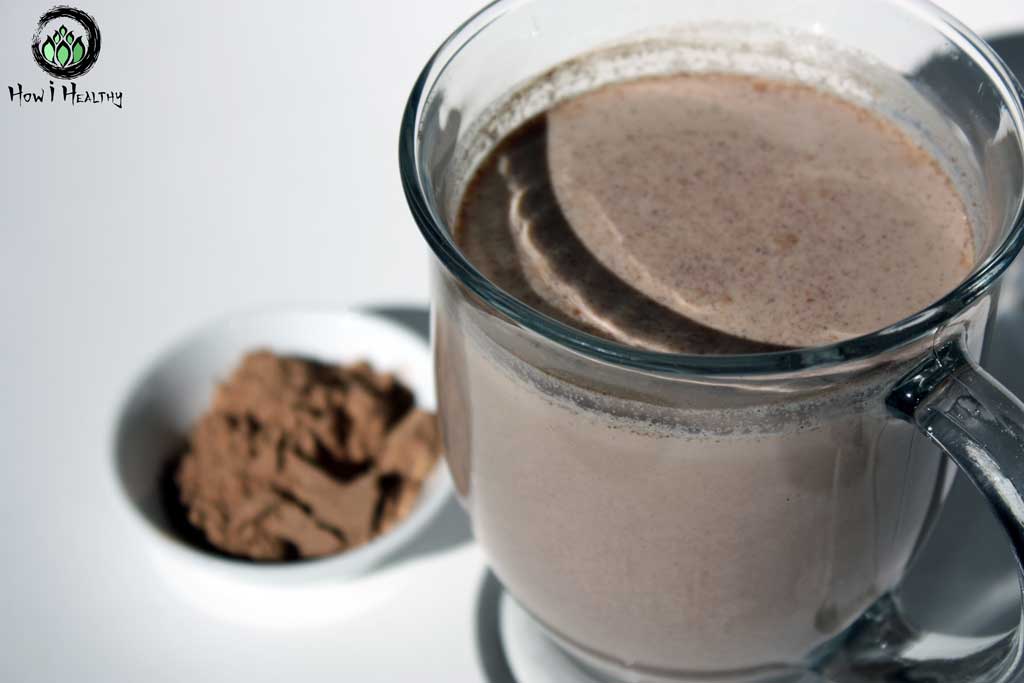
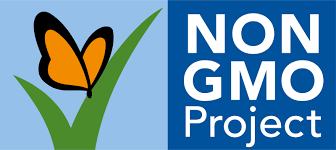
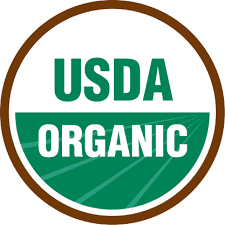
Product Kudos
Origin: Peru.
End of Life: Foil lined bag recycled at some centers or through TerraCycle.
Ingredients/Packaging:
- The Morning Motivator: Gelatinized Tri-Color Maca Root Powder, Raw Cacao Powder, Raw Coconut Sugar*, Raw Mezquite, Raw Lucuma* (24)
Why It’s Awesome:
- Delicious! Thick and creamy with a rich bold flavor.
- Have a yummy nighttime dessert and craving a coffee accompaniment? Drink this and avoid caffeine-induced insomnia!
- Heavier than water on the tongue, The Morning Motivator is full bodied, thick, and creamy; like sipping chocolate or full-fat mocha.
- Mix with any liquid you want. Water, animal milk, plant milk, or coffee- you choose!
- Perfect for any time of day. I’ll often enjoy a cup in the afternoons when I need a little pick-me-up.
- Serve hot, cold, over ice. There are so many ways to drink this!
- Versatile! Add cinnamon, clove, chili pepper, or other spices for a twist.
- There’s a comforting heft to a full mug that makes me want to snuggle under a blanket and tuck into a book.
- Side Note: Every time I sat down to edit this article; I made a cup of Morning Motivator. Just seeing the photos got me craving the maca-chocolate deliciousness!
Company Kudos
- Heavy metal and pesticide free with testing reports to back up the claim. That’s super important for me as someone with a history of Lead Poisoning.
- The Maca Team® products are certified USDA organic, non-GMO, and sourced from family farms in the Junin province of Peru.
- The family farms use traditional agricultural methods, the way their ancestors have for generations. This helps the maca maintain maximum nutrient profiles while promoting field sustainability.
- Refuses to sell on third-party marketplaces that do not align with their values.
(1,2, 76)
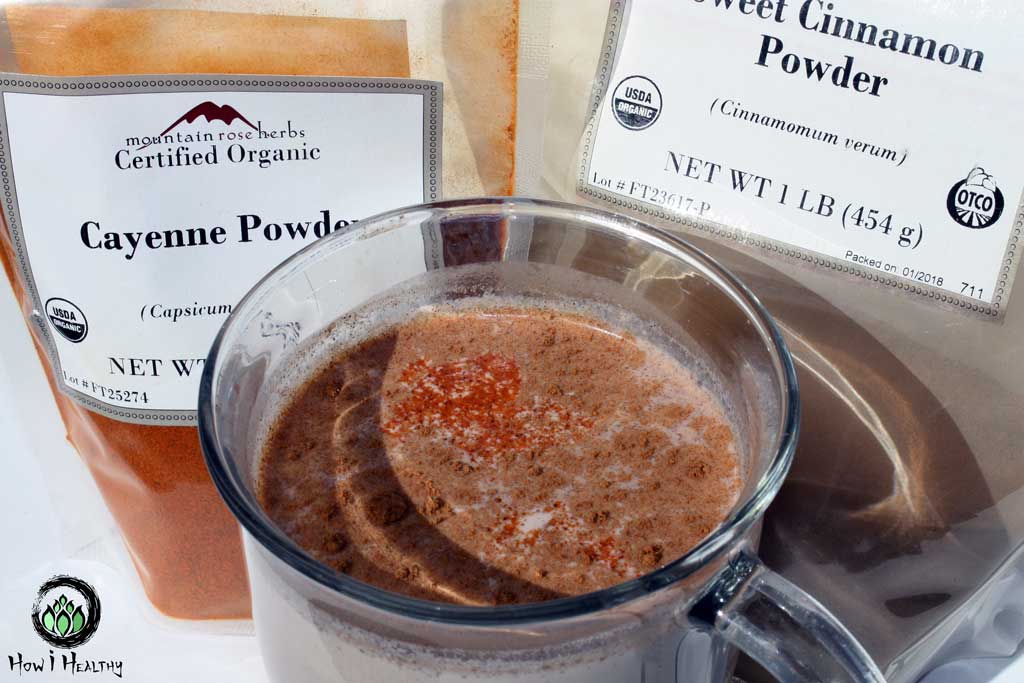
Mt. Rose Herbs® Herbal Coffee
Next up is this little beauty!
Made by Mt. Rose Herbs, a favorite of mine.
Seriously, this company has a lot going for it. Here’s an in-depth Review of Mountain Rose Herbs®.
This herbal coffee blends chicory root, dandelion leaf, & maca for a bold brew.
Let’s dive in!
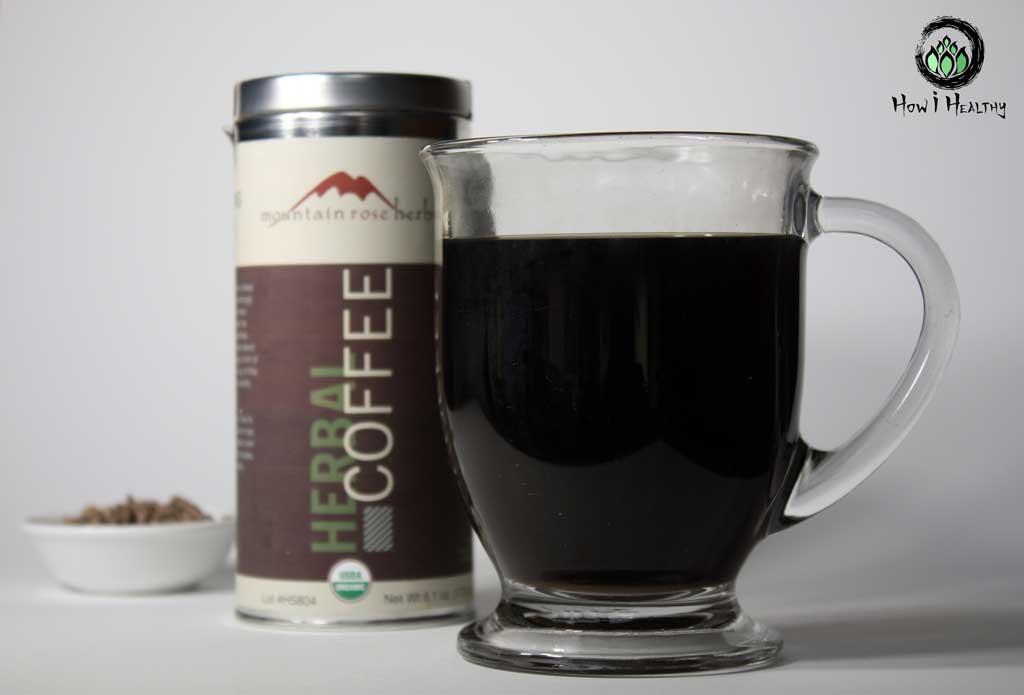
Chicory Root
Chicory is a blue-flowering plant with a range of nutrients like protein, vitamins, minerals, bioactive phenol compounds, flavonoids, and inulin. (31)
Inulin is a type of prebiotic fiber. This means our bodies do not digest it and instead this fiber acts as food for the beneficial bacteria in our gastro-intestinal system. Inulin has shown to increase bifidobacteria populations of the colon. Yay, microbiome! (33, 37, 39)
Humans and animals have consumed chicory, both leaves and roots, since ancient times for culinary and medicinal purposes. At the end of the 18th century in Germany, chicory root became popular when Fredrick the Great prohibited coffee imports. (37, 40)
Chicory root and inulin in clinical studies has found to potentially:
- Have both anti-inflammatory and antioxidant qualities.
- Contain calcium and magnesium.
- Lower inflammation
- Improve cholesterol levels and digestive health.
- Support weight loss by reducing levels of ghrelin, an appetite-inducing hormone.
- Lower hemoglobin A1C levels and help stabilize blood sugars.
(31, 32, 33, 34, 35, 36, 38, 39, 41)
Dandelion
Yep, that pretty plant with the fluffy pompoms. Turns out those “weeds” that get mowed over are packed full of goodness.
Flowers, leaves, stems, and roots contain flavonoids, and other bioactive compounds that suggest antioxidant and anti-inflammatory properties. (41)
Dandelion is rich in vitamins A, C, D, E and B, minerals like iron, magnesium, calcium, manganese, and zinc. Similar to chicory root, dandelion root also contains inulin. (41)
Dandelion is bitter, one reason it resembles a coffee-like flavor when roasted. (41)
In the limited number of studies I did find, dandelion might have benefits like:
- Anti-diabetic properties and blood sugar regulation capabilities
- Counteract hyperglycemia and improve insulin levels
- Anti-inflammatory, anti-cancer, anti-tumor, anti-oxidant effects, anti-viral
- Improve cholesterol lipid panels
- Reduce levels of stored fat in Obesity-Related Non-Alcoholic Fatty Liver Disease
- Improve and protect tissues in acetaminophen damaged liver
(41, 44, 45, 46, 47, 48, 49, 50, 51, 52, 53, 54)
Note: The research on these benefits is very limited, and most not involving human testing.
Mt. Rose Herbs® Herbal Coffee
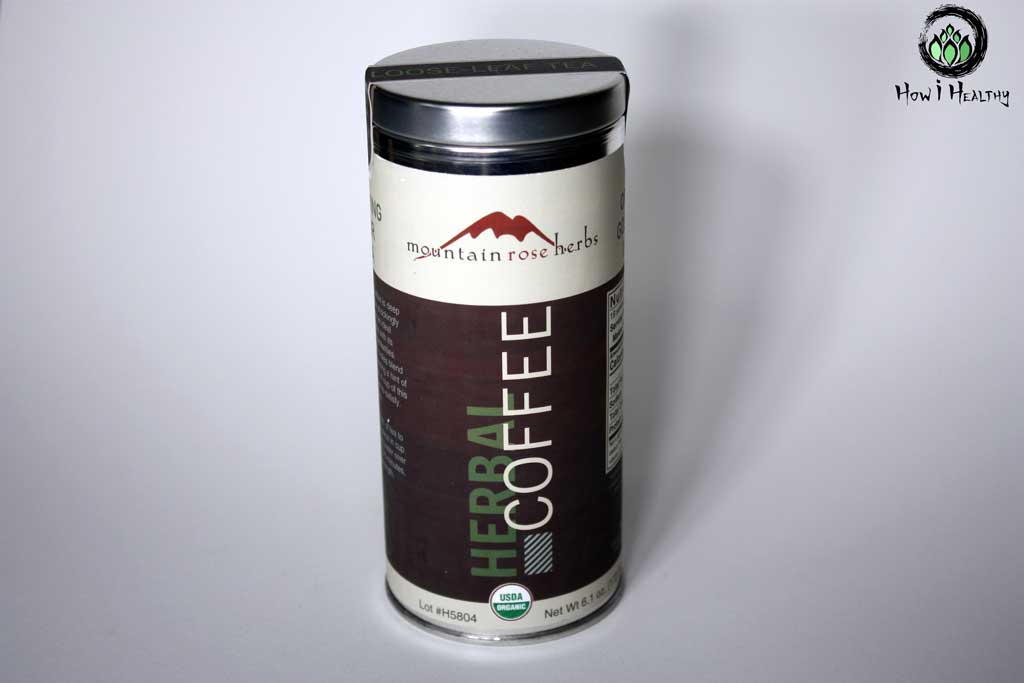




Product Kudos
Origin: USA.
End of Life: Recyclable tin.
Ingredients/Packaging:
- Herbal Coffee: Organic roasted dandelion root, organic roasted chicory root, organic roasted carob, and organic maca powder. (30)
- Packed in a recyclable tin.
Why It’s Awesome:
- Easy to brew. Just step like loose leaf tea (or French press!) in hot water. Or cold brew in the fridge overnight!
- Just slightly heavier than water on the tongue. More similar to coffee texture than The Morning Motivator.
- This herbal coffee has the most similar flavor and body to coffee I’ve ever found.
- It makes a for an excellent dessert pairing at night when I don’t want caffeine insomnia.
Company Kudos
- Carbon off-setting through NativeEnergy®.
- Certified Oregon Benefit Company.
- Green America® Business Gold Certified.
- Massive selection of Oregon Tilth Certified Organic®, Non-GMO Project Verified® , For Life® and Fair for Life Fair Trade® products.
- Platinum Level TRUE® Zero Waste Facility.
- Powered 100% by renewable energy.
- Salmon-Safe® and Trout-Friendly® Landscape Certified.
(73, 74, 75)
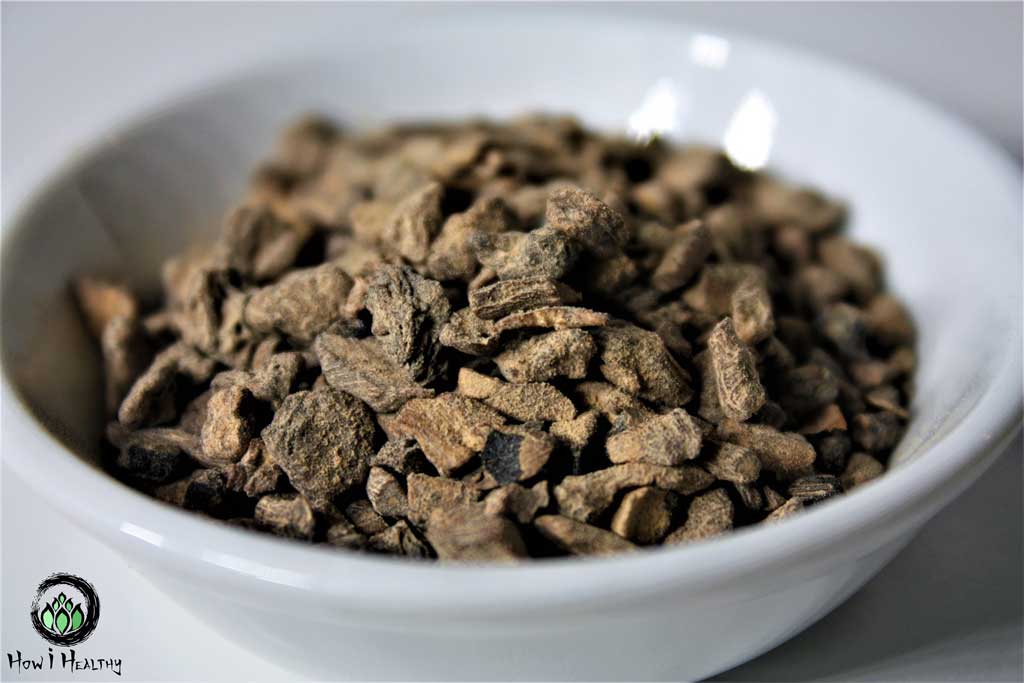
The Takeaway Message





Coffee is more than a beverage.
Coffee influenced history, culture, religion, and politics for centuries. Coffeehouses were intellectual meeting places where revolutions and freethinking brewed. (58, 62, 63)
Coffee drinking cultural is more than just coffee. It’s an experience.
That’s why coffee alternatives fall short for me.
They don’t meet the high bar coffee sets.
I drink coffee, but I try to limit how much because I can get the jitters from caffeine-overload.
After years of searching, I’ve found few alternatives on par with the yummy goodness that don’t leave me wanting coffee:
A warm hefty Lead-Free Mug of either fills me with that cozy cup-of-coffee feeling.
You know that feeling. That moment when the world stills and all that exists is that warm brew and you. A balance of alertness and calm.
The fuel that starts the day while simultaneously slowing us down to enjoy a sip.
Added bonus?
Both options potentially offer antioxidant benefits, trace minerals, vitamins, blood sugar stabilization, and fiber. (25, 26, 27, 28, 29, 30, 31, 37, 41)
Taste good, is healthy, and comes from a great company? Sure!
That’s How i Healthy!
-Artemis
- “Why Choose Us.” About The Maca Team | Select Peruvian Maca, themacateam.com/why-choose-us
- The Maca Team Testing and COAs, themacateam.com/testing-and-coa-page
- Gonzales, Gustavo F. “Ethnobiology and Ethnopharmacology of Lepidium meyenii (Maca), a Plant from the Peruvian Highlands.” Evidence-based complementary and alternative medicine : eCAM 2012 (2012): 193496. doi:10.1155/2012/193496. https://pubmed.ncbi.nlm.nih.gov/21977053/
- Gonzales, Carla et al. “Effect of short-term and long-term treatments with three ecotypes of Lepidium meyenii (MACA) on spermatogenesis in rats.” Journal of ethnopharmacology 103,3 (2006): 448-54. doi:10.1016/j.jep.2005.08.035. https://pubmed.ncbi.nlm.nih.gov/16174556/
- Rubio, Julio et al. “Lepidium meyenii (Maca) reversed the lead acetate induced — damage on reproductive function in male rats.” Food and chemical toxicology : an international journal published for the British Industrial Biological Research Association 44,7 (2006): 1114-22. doi:10.1016/j.fct.2006.01.007. https://pubmed.ncbi.nlm.nih.gov/16510228/
- Gonzales, G F et al. “Effect of Lepidium meyenii (MACA) on sexual desire and its absent relationship with serum testosterone levels in adult healthy men.” Andrologia 34,6 (2002): 367-72. doi:10.1046/j.1439-0272.2002.00519.x. https://pubmed.ncbi.nlm.nih.gov/12472620/
- Dording, Christina M et al. “A double-blind, randomized, pilot dose-finding study of maca root (L. meyenii) for the management of SSRI-induced sexual dysfunction.” CNS neuroscience & therapeutics 14,3 (2008): 182-91. doi:10.1111/j.1755-5949.2008.00052.x. https://pubmed.ncbi.nlm.nih.gov/18801111/
- Cicero, A F et al. “Lepidium meyenii Walp. improves sexual behaviour in male rats independently from its action on spontaneous locomotor activity.” Journal of ethnopharmacology 75,2-3 (2001): 225-9. doi:10.1016/s0378-8741(01)00195-7. https://pubmed.ncbi.nlm.nih.gov/11297856/
- Dording, Christina M et al. “A double-blind placebo-controlled trial of maca root as treatment for antidepressant-induced sexual dysfunction in women.” Evidence-based complementary and alternative medicine : eCAM 2015 (2015): 949036. doi:10.1155/2015/949036. https://pubmed.ncbi.nlm.nih.gov/25954318/
- Stone, Mark et al. “A pilot investigation into the effect of maca supplementation on physical activity and sexual desire in sportsmen.” Journal of ethnopharmacology 126,3 (2009): 574-6. doi:10.1016/j.jep.2009.09.012. https://pubmed.ncbi.nlm.nih.gov/19781622/
- Zenico, T et al. “Subjective effects of Lepidium meyenii (Maca) extract on well-being and sexual performances in patients with mild erectile dysfunction: a randomised, double-blind clinical trial.” Andrologia 41,2 (2009): 95-9. doi:10.1111/j.1439-0272.2008.00892.x. https://pubmed.ncbi.nlm.nih.gov/19260845/
- Stojanovska, L et al. “Maca reduces blood pressure and depression, in a pilot study in postmenopausal women.” Climacteric : the journal of the International Menopause Society 18,1 (2015): 69-78. doi:10.3109/13697137.2014.929649. https://www.tandfonline.com/doi/full/10.3109/13697137.2014.929649
- Rubio, Julio et al. “Effect of three different cultivars of Lepidium meyenii (Maca) on learning and depression in ovariectomized mice.” BMC complementary and alternative medicine 6 23. 23 Jun. 2006, doi:10.1186/1472-6882-6-23. https://pubmed.ncbi.nlm.nih.gov/16796734/
- Rubio, Julio et al. “Aqueous Extract of Black Maca (Lepidium meyenii) on Memory Impairment Induced by Ovariectomy in Mice.” Evidence-based complementary and alternative medicine : eCAM 2011 (2011): 253958. doi:10.1093/ecam/nen063. https://pubmed.ncbi.nlm.nih.gov/18955369/
- Zhang, Yongzhong et al. “Effect of ethanol extract of Lepidium meyenii Walp. on osteoporosis in ovariectomized rat.” Journal of ethnopharmacology 105,1-2 (2006): 274-9. doi:10.1016/j.jep.2005.12.013. https://pubmed.ncbi.nlm.nih.gov/16466876/
- Sanchez-Salazar, L, and G F Gonzales. “Aqueous extract of yellow maca inou(Lepidium meyenii) improves sperm count in experimental animals but response depends on hypocotyl size, pH and routes of administration.” Andrologia 50,3 (2018): 10.1111/and.12929. doi:10.1111/and.12929. https://onlinelibrary.wiley.com/doi/10.1111/and.12929
- Gonzales-Arimborgo, Carla et al. “Acceptability, Safety, and Efficacy of Oral Administration of Extracts of Black or Red Maca (Lepidium meyenii) in Adult Human Subjects: A Randomized, Double-Blind, Placebo-Controlled Study.” Pharmaceuticals (Basel, Switzerland) 9,3 49. 18 Aug. 2016, doi:10.3390/ph9030049. https://www.mdpi.com/1424-8247/9/3/49#
- Gonzales, G F et al. “Effect of Black maca (Lepidium meyenii) on one spermatogenic cycle in rats.” Andrologia 38,5 (2006): 166-72. doi:10.1111/j.1439-0272.2006.00733.x. https://onlinelibrary.wiley.com/doi/10.1111/j.1439-0272.2006.00733.x
- Ruiz-Luna, Ana C et al. “Lepidium meyenii (Maca) increases litter size in normal adult female mice.” Reproductive biology and endocrinology : RB&E 3 16. 3 May. 2005, doi:10.1186/1477-7827-3-16. https://pubmed.ncbi.nlm.nih.gov/15869705/
- Gonzales, Carla et al. “Effects of different varieties of Maca (Lepidium meyenii) on bone structure in ovariectomized rats.” Forschende Komplementarmedizin (2006) 17,3 (2010): 137-43. doi:10.1159/000315214.
- Tafuri, Simona et al. “Chemical Analysis of Lepidium meyenii (Maca) and Its Effects on Redox Status and on Reproductive Biology in Stallions †.” Molecules (Basel, Switzerland) 24,10 1981. 23 May. 2019, doi:10.3390/molecules24101981. https://www.ncbi.nlm.nih.gov/pmc/articles/PMC6571579/
- Gonzales, G F et al. “Lepidium meyenii (Maca) improved semen parameters in adult men.” Asian journal of andrology 3,4 (2001): 301-3. https://pubmed.ncbi.nlm.nih.gov/11753476/
- “Raw and Gelatinized.” Types of Maca | Which Maca Is Best? | The Maca Team, themacateam.com/which-maca-is-best
- “The Morning Motivator Blend.” The Maca Team, LLC, themacateam.com/the-morning-motivator-blend
- Latif, Rabia. “Health benefits of cocoa.” Current opinion in clinical nutrition and metabolic care 16,6 (2013): 669-74. doi:10.1097/MCO.0b013e328365a235. https://pubmed.ncbi.nlm.nih.gov/24100674/
- Díaz-Batalla, Luis et al. “Nutritional Characterization of Prosopis laevigata Legume Tree (Mesquite) Seed Flour and the Effect of Extrusion Cooking on its Bioactive Components.” Foods (Basel, Switzerland) 7,8 124. 1 Aug. 2018, doi:10.3390/foods7080124. https://www.ncbi.nlm.nih.gov/pmc/articles/PMC6111743/
- Fuentealba, Claudia et al. “Characterization of main primary and secondary metabolites and in vitro antioxidant and antihyperglycemic properties in the mesocarp of three biotypes of Pouteria lucuma.” Food chemistry 190 (2016): 403-411. doi:10.1016/j.foodchem.2015.05.111. https://pubmed.ncbi.nlm.nih.gov/26212989/
- Fuentealba, Claudia et al. “Characterization of main primary and secondary metabolites and in vitro antioxidant and antihyperglycemic properties in the mesocarp of three biotypes of Pouteria lucuma.” Food chemistry 190 (2016): 403-411. doi:10.1016/j.foodchem.2015.05.111. https://pubmed.ncbi.nlm.nih.gov/26212989/
- Asghar, Muhammad Tuseef et al. “Coconut (Cocos nucifera) sap as a potential source of sugar: Antioxidant and nutritional properties.” Food science & nutrition vol. 8,4 1777-1787. 30 Sep. 2019, doi:10.1002/fsn3.1191. https://onlinelibrary.wiley.com/doi/10.1002/fsn3.1191
- “Herbal Coffee.” Mountain Rose Herbs, https://mountainroseherbs.com/herbal-coffee
- Nwafor, Ifeoma Chinyelu et al. “Chemical Composition and Nutritive Benefits of Chicory (Cichorium intybus) as an Ideal Complementary and/or Alternative Livestock Feed Supplement.” TheScientificWorldJournal 2017 (2017): 7343928. doi:10.1155/2017/7343928. https://pubmed.ncbi.nlm.nih.gov/29387778/
- Parnell, Jill A, and Raylene A Reimer. “Weight loss during oligofructose supplementation is associated with decreased ghrelin and increased peptide YY in overweight and obese adults.” The American journal of clinical nutrition 89,6 (2009): 1751-9. doi:10.3945/ajcn.2009.27465. https://pubmed.ncbi.nlm.nih.gov/19386741/
- Nishimura, Mie et al. “Effects of the extract from roasted chicory (Cichorium intybus L.) root containing inulin-type fructans on blood glucose, lipid metabolism, and fecal properties.” Journal of traditional and complementary medicine 5,3 161-7. 20 Jan. 2015, doi:10.1016/j.jtcme.2014.11.016. https://pubmed.ncbi.nlm.nih.gov/26151029/
- Dehghan, Parvin et al. “Effects of high performance inulin supplementation on glycemic status and lipid profile in women with type 2 diabetes: a randomized, placebo-controlled clinical trial.” Health promotion perspectives 3,1 55-63. 30 Jun. 2013, doi:10.5681/hpp.2013.007. https://pubmed.ncbi.nlm.nih.gov/24688953/
- Legette, LeeCole L et al. “Prebiotics enhance magnesium absorption and inulin-based fibers exert chronic effects on calcium utilization in a postmenopausal rodent model.” Journal of food science 77,4 (2012): H88-94. doi:10.1111/j.1750-3841.2011.02612.x. https://ift.onlinelibrary.wiley.com/doi/10.1111/j.1750-3841.2011.02612.x
- Legette, LeeCole L et al. “Prebiotics enhance magnesium absorption and inulin-based fibers exert chronic effects on calcium utilization in a postmenopausal rodent model.” Journal of food science 77,4 (2012): H88-94. doi:10.1111/j.1750-3841.2011.02612.x. https://ift.onlinelibrary.wiley.com/doi/10.1111/j.1750-3841.2011.02612.x
- Puhlmann, Marie-Luise, and Willem M de Vos. “Back to the Roots: Revisiting the Use of the Fiber-Rich Cichorium intybusL. Taproots.” Advances in nutrition (Bethesda, Md.) 11,4 (2020): 878-889. doi:10.1093/advances/nmaa025. https://www.sciencedirect.com/science/article/pii/S2161831322001673?via%3Dihub
- Kaur, Narinder, and Anil K Gupta. “Applications of inulin and oligofructose in health and nutrition.” Journal of biosciences 27,7 (2002): 703-14. doi:10.1007/BF02708379. https://pubmed.ncbi.nlm.nih.gov/12571376/
- Flamm, G et al. “Inulin and oligofructose as dietary fiber: a review of the evidence.” Critical reviews in food science and nutrition 41,5 (2001): 353-62. doi:10.1080/20014091091841. https://pubmed.ncbi.nlm.nih.gov/11497328/
- Law W. The History of Coffee, Including a Chapter on Chicory. Edinburgh: William and George Law; 1850.
- González-Castejón, Marta et al. “Diverse biological activities of dandelion.” Nutrition reviews 70,9 (2012): 534-47. doi:10.1111/j.1753-4887.2012.00509.x. https://pubmed.ncbi.nlm.nih.gov/22946853/
- “Dandelion.” National Center for Complementary and Integrative Health, U.S. Department of Health and Human Services, nccih.nih.gov/health/dandelion
- Wirngo, Fonyuy E et al. “The Physiological Effects of Dandelion (Taraxacum Officinale) in Type 2 Diabetes.” The review of diabetic studies : RDS 13,2-3 (2016): 113-131. doi:10.1900/RDS.2016.13.113. https://pubmed.ncbi.nlm.nih.gov/28012278/
- Park, Chung Mu et al. “TOP 1 and 2, polysaccharides from Taraxacum officinale, inhibit NFκB-mediated inflammation and accelerate Nrf2-induced antioxidative potential through the modulation of PI3K-Akt signaling pathway in RAW 264.7 cells.” Food and chemical toxicology : an international journal published for the British Industrial Biological Research Association 66 (2014): 56-64. doi:10.1016/j.fct.2014.01.019. https://pubmed.ncbi.nlm.nih.gov/24447978/
- Koh, Yoon-Jeoung et al. “Anti-inflammatory effect of Taraxacum officinale leaves on lipopolysaccharide-induced inflammatory responses in RAW 264.7 cells.” Journal of medicinal food 13,4 (2010): 870-8. doi:10.1089/jmf.2009.1249. https://www.liebertpub.com/doi/10.1089/jmf.2009.1249
- Davaatseren, Munkhtugs et al. “Taraxacum official (dandelion) leaf extract alleviates high-fat diet-induced nonalcoholic fatty liver.” Food and chemical toxicology : an international journal published for the British Industrial Biological Research Association 58 (2013): 30-6. doi:10.1016/j.fct.2013.04.023. https://pubmed.ncbi.nlm.nih.gov/23603008/
- Choi, Ung-Kyu et al. “Hypolipidemic and antioxidant effects of dandelion (Taraxacum officinale) root and leaf on cholesterol-fed rabbits.” International journal of molecular sciences 11,1 67-78. 6 Jan. 2010, doi:10.3390/ijms11010067. https://pubmed.ncbi.nlm.nih.gov/20162002/
- Colle, Dirleise et al. “Antioxidant properties of Taraxacum officinale leaf extract are involved in the protective effect against hepatoxicity induced by acetaminophen in mice.” Journal of medicinal food 15,6 (2012): 549-56. doi:10.1089/jmf.2011.0282. https://pubmed.ncbi.nlm.nih.gov/22424457/
- Sigstedt, Sophia C et al. “Evaluation of aqueous extracts of Taraxacum officinale on growth and invasion of breast and prostate cancer cells.” International journal of oncology 32,5 (2008): 1085-90. https://pubmed.ncbi.nlm.nih.gov/18425335/
- Rehman, Gauhar et al. “Effect of Methanolic Extract of Dandelion Roots on Cancer Cell Lines and AMP-Activated Protein Kinase Pathway.” Frontiers in pharmacology 8 875. 28 Nov. 2017, doi:10.3389/fphar.2017.00875. https://pubmed.ncbi.nlm.nih.gov/29234282/
- Ovadje, Pamela et al. “Selective induction of apoptosis and autophagy through treatment with dandelion root extract in human pancreatic cancer cells.” Pancreas 41,7 (2012): 1039-47. doi:10.1097/MPA.0b013e31824b22a2. https://pubmed.ncbi.nlm.nih.gov/22647733/
- Ovadje, Pamela et al. “Dandelion root extract affects colorectal cancer proliferation and survival through the activation of multiple death signalling pathways.” Oncotarget 7,45 (2016): 73080-73100. doi:10.18632/oncotarget.11485. https://pubmed.ncbi.nlm.nih.gov/27564258/
- Jia, Yuan-Yuan et al. “Taraxacum mongolicum extract exhibits a protective effect on hepatocytes and an antiviral effect against hepatitis B virus in animal and human cells.” Molecular medicine reports 9,4 (2014): 1381-7. doi:10.3892/mmr.2014.1925. https://pubmed.ncbi.nlm.nih.gov/24481875/
- Han, Huamin et al. “Inhibitory effect of aqueous Dandelion extract on HIV-1 replication and reverse transcriptase activity.” BMC complementary and alternative medicine 11 112. 14 Nov. 2011, doi:10.1186/1472-6882-11-112
- Oh, Sumi et al. “Antioxidant Properties of Aqueous Extract of Roasted Hulled Barley in Bulk Oil or Oil-in-Water Emulsion Matrix.” Journal of food science 80,11 (2015): C2382-8. doi:10.1111/1750-3841.13073. https://pubmed.ncbi.nlm.nih.gov/22078030/
- Etoh, Hideo et al. “Anti-oxidative compounds in barley tea.” Bioscience, biotechnology, and biochemistry 68,12 (2004): 2616-8. doi:10.1271/bbb.68.2616. https://pubmed.ncbi.nlm.nih.gov/15618635/
- Weinberg, Bennett Alan; Bealer, Bonnie K. (2001). The world of caffeine. Routledge. https://www.routledge.com/The-World-of-Caffeine-The-Science-and-Culture-of-the-Worlds-Most-Popular/Weinberg-Bealer/p/book/9780415927239
- McHugo, John. “Coffee and Qahwa: How a Drink for Arab Mystics Went Global.” BBC News, BBC, 18 Apr. 2013, bbc.com/news/magazine-22190802
- “Coffee.” Merriam-Webster, Merriam-Webster, merriam-webster.com/dictionary/coffee
- SOPHIE, RAOBEHARILALA. “Maltese History Through a Sweet Tooth.” Maltese History through a Sweet Tooth | Tenzo Le Gastrocéphale, 13 Dec. 2013,
- “History of Viennese Coffee House Culture.” Stadt Wien – Offizielle & Aktuelle Infos Und Services Der Wiener Stadtverwaltung, City Of Vienna, wien.gv.at/english/culture-history/viennese-coffee-culture.html
- Zuraw, Lydia. “How Coffee Influenced The Course Of History.” NPR, NPR, 24 Apr. 2013. https://www.npr.org/sections/thesalt/2013/04/24/178625554/how-coffee-influenced-the-course-of-history
- Cole, Adam. “Drink Coffee? Off With Your Head!” NPR, NPR, 17 Jan. 2012, npr.org/sections/thesalt/2012/01/10/144988133/drink-coffee-off-with-your-head
- Center for Drug Evaluation and Research. “Public Notification: Peru Maca Contains Hidden Drug Ingredient.” S. Food and Drug Administration, FDA, 2019, www.fda.gov/drugs/medication-health-fraud/public-notification-peru-maca-contains-hidden-drug-ingredient
- Gonzales, Gustavo F. “Ethnobiology and Ethnopharmacology of Lepidium meyenii (Maca), a Plant from the Peruvian Highlands.” Evidence-based complementary and alternative medicine : eCAM 2012 (2012): 193496. doi:10.1155/2012/193496. https://pubmed.ncbi.nlm.nih.gov/21977053/
- Jack Lo Lau. October 31, 2019. “Maca: the Dubious Aphrodisiac Chinese Biopirates Took from Peru.” Dialogo Chino, 22 Nov. 2019, https://dialogochino.net/en/agriculture/31279-maca-the-dubious-aphrodisiac-chinese-biopirates-took-from-peru/
- León, Carlos. “Adex Alerta Compra Ilegal De Toneladas De Maca De Chinos.” RPP, 24 June 2014, https://rpp.pe/economia/economia/adex-alerta-compra-ilegal-de-toneladas-de-maca-de-chinos-noticia-702574
- “Report: One Fifth of China’s Soil Contaminated.” BBC News, BBC, 18 Apr. 2014, bbc.com/news/world-asia-china-27076645
- In China, the Water You Drink Is as Dangerous as the Air You Breathe | Deng Tingting.” The Guardian, Guardian News and Media, 2 June 2017, theguardian.com/global-development-professionals-network/2017/jun/02/china-water-dangerous-pollution-greenpeace
- “Story of Illegally Dumped Chromium in China Wins Environmental Press Award.” The Guardian, Guardian News and Media, 11 Apr. 2012, theguardian.com/environment/2012/apr/11/poisoning-exposed-illegally-dumped-chromium-china
- Ni, Angela. “Meeting Rural Water and Sanitation Needs in Yunnan, China.” Speaking of Medicine, 4 Apr. 2011, https://speakingofmedicine.plos.org/2011/04/04/meeting-rural-water-and-sanitation-needs-in-yunnan-china/
- Bore, Zach. “Mapped: Nearly Half of China’s Provinces Have Failed to Clean up Their Water.” Unearthed, GreenPeace, 14 Sept. 2017, https://unearthed.greenpeace.org/2017/06/01/china-water-quality-data-shanghai-beijing/
- ” Mountain Rose Herbs, 2020, https://mountainroseherbs.com/principles/certifications/
- “Organics and Sustainability.”, Mountain Rose Herbs, 2020, https://mountainroseherbs.com/principles/sustainability/
- “Who We Support.” Mountain Rose Herbs, 2020, https://mountainroseherbs.com/principles/who-we-support
- “We no longer sell on Amazon” The Maca Team. https://www.themacateam.com/the-maca-team-no-longer-sells-on-amazon
Want More?
Like coffee and unique takes on history? Want a closer look on coffee’s global impact? Enjoy supporting local bookstores?
Here’s a great book to enjoy with a cup of coffee:
Uncommon Grounds: The History of Coffee and How It Transformed Our World
By Mark Pendergrast
It’s coffee and history. Two of my favorite things. It’s academic and might require a few cups of coffee to get through.
The only thing I’d change is the title.
This predominantly focuses on America, not the world.
Sure, it covers coffee’s origin story across the Atlantic, but then focuses almost exclusively on American exploitation of global coffee farmers. It’s an important issue to cover, but I’d also appreciate personal accounts from those farmers. And what the impact of unfair coffee trading did/does to their communities.
But, for a thorough example of US coffee practices and exploitation, it’s unmatched.
Buy From: Bookshop® or Better World Books®
